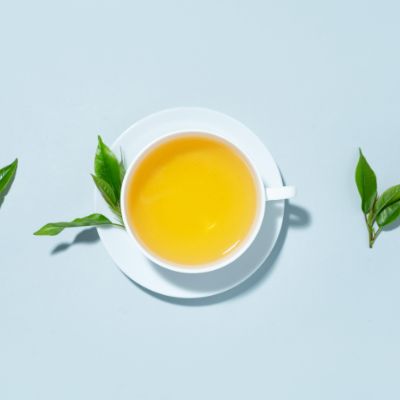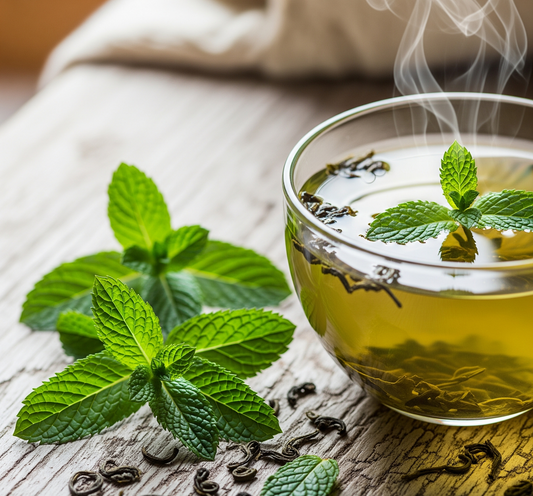White tea, prized for its delicate flavor and health benefits, is crafted from the youngest leaves and buds, meticulously plucked and withered to enhance flavor. Minimal processing preserves its delicate nature, with sorting, grading, and careful packaging ensuring premium quality. Brewing at lower temperatures brings out its gentle flavors, while its health benefits, lower caffeine content compared to green tea, and versatility in brewing styles make white tea a sought-after choice for tea enthusiasts seeking a refreshing and healthy beverage.
White tea, known for its delicate and subtle aroma and flavor profile, is essentially the most pure and unprocessed tea among its contemporaries. Regarded as one of the healthiest beverages available, only the youngest and newest leaves from every tea bush are used to make white tea. Interesting, right? This tea has also picked up quite a reputation for being a premium gourmet tea. Let’s take a deeper look into the fascinating production process of white teas, from plucking to drinking.
Plucking
The first step in producing white tea starts with the careful and precise plucking of only the youngest tea leaves and buds from the tea bushes. These tender and fresh shoots are typically harvested during early spring when they are at their peak health. Experienced and skilled tea farmers select only the finest buds and leaves. This ensures that only the best quality plants and buds are selected for further processing.
Withering
After the freshest tea leaves and buds are picked, they go through an important process called withering. During the withering process, the leaves are spread out inside a well-ventilated room and allowed to wilt naturally till they are completely dry. However, if the weather isn’t cooperating during the day of the harvest, dryers set at very low temperatures are used to assist the leaves to wilt quicker.

This is a crucial process that helps reduce the moisture in the leaves, making them more pliable for the rest of the production process. Furthermore, withering has also been known to enhance the flavor profile of the tea by concentrating the natural compounds of the leaves.
Indoor Drying
After the leaves have undergone sufficient withering, they are then loaded and taken to a different space for drying. Compared to black, green, and oolong tea which undergo further processing like rolling and oxidization, white teas are minimally treated to preserve their delicate flavor. The heating process involves gradually heating the leaves to halt any enzymatic activities and lock in the natural flavors of the tea.
Sorting and Grading
Once withered and dried, the white tea leaves are carefully sorted and graded. The grading process involves segregating the leaves based on their size, shape, and quality. This step ensures that only the best tea leaves are selected as the final product. The white teas are often graded based on the fullness of the buds, and the overall aesthetics of the leaves. You can find white teas with higher grades commanding premium prices due to their superior quality.
Packaging
Once the tea leaves have been sorted and graded, they go to the penultimate step, packaging. The white teas are often packaged in the form of loose leaves as a means of preserving their delicate flavor and aroma. The packaging is a crucial step as it needs to be carried out with great care to ensure that the white tea remains fresh and retains its premium quality until it reaches the consumers. Although white tea is preferred by many tea connoisseurs in loose-leaf form for its superior form, some teas are also packed in tea bags for convenience.
You may also like: How long should you steep your black tea?
Brewing White Tea
Preparing a cup of fresh white tea is super easy. However, it is important to keep a few things in mind if you want to bring out its gentle and delicate flavors. White tea is best brewed in water that is below boiling temperature i.e. around 175°F to 185°F (80°C to 85°C). Steep the tea leaves for around 4 to 7 minutes to allow the flavors to infuse into the warm water.
Pick from a range of premium white teas from Nepal Tea Collective.
You can also use hotter water (190°F or more with a lower steeping duration) but remember that using cooler water will bring out the sweet and delicate quality that white teas are so famous for, whereas using warmer water will yield a brighter brew with more body. The resulting brew is a subtly sweet, light, and delicate-pale liquor with slight floral notes. White teas can be brewed multiple times, each steep revealing a new layer of flavors. However, the flavors get lighter the more you steep the leaves.

The versatility of white tea means that you can also prepare a cold brew. Cold-brewing white tea makes for a smooth, low-caffeine tea that is loaded with sweet and fruity notes. We recommend giving it a quick rinse with hot water to kill off any bacteria for safe measures.
Is White Tea Good for You?
White Tea is famous for its numerous health benefits. Rich in antioxidants and polyphenols, it is believed that white tea has anti-inflammatory and even anti-aging properties. This tea may also help boost the immune system and promote overall well-being. If that’s not more than enough reason to try white tea, regular consumption of white tea is also associated with improved skin health, weight loss, and heart health. All of these traits make white tea a great choice among health-conscious tea drinkers.
Does White Tea Have Caffeine?
Short answer, Yes! White tea has caffeine. Because White tea comes from the Camellia Sinensis plant, it is naturally caffeinated.

As a matter of fact, white tea is a close variant of green tea, and while it should contain an equal amount of caffeine, according to research by the National Library of Medicine, experts estimate white tea contains 15% less caffeine compared to traditional green tea.
In conclusion, the production process of white tea is an intensive labor of love that involves careful attention to detail, a tremendous skill set, and a deep respect for nature. From the initial meticulous plucking of fresh buds and leaves to the gentle drying and packing of the finished product, each step is a testament to the legacy of white tea. Regardless of whether you enjoy white tea hot or cold, the beverage offers a refreshing and soothing experience that is both delightful and healthy.




